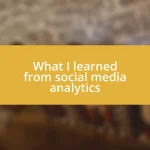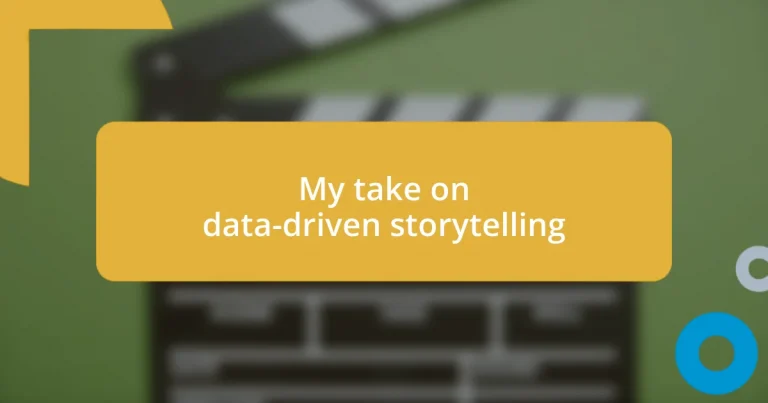Key takeaways:
- Data-driven storytelling transforms raw data into relatable narratives, evoking emotional connections that enhance audience engagement and understanding.
- Key elements of effective storytelling include character development, a clear narrative arc, and relatability, which help to structure and humanize the data presented.
- Integrating diverse data sources and creating compelling visualizations enrich the storytelling experience, making it more impactful and capable of driving community conversations and actions.
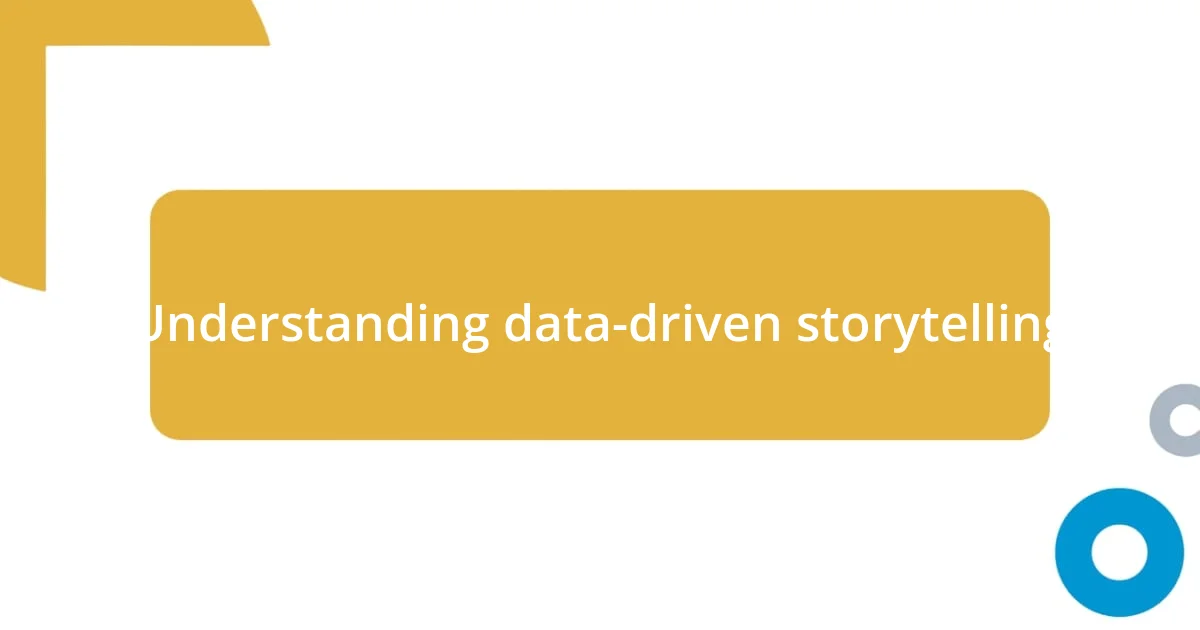
Understanding data-driven storytelling
Data-driven storytelling is about transforming raw numbers into compelling narratives that resonate with the audience. I remember when I first encountered a data set that seemed dense and overwhelming. It was a challenge to see the story hiding within those numbers, but once I took the time to analyze and interpret the data, the insights came alive, revealing trends that spoke volumes about consumer behavior.
One of the most powerful aspects of data-driven storytelling is its ability to evoke emotion. When I shared a report that highlighted the impact of a community program through before-and-after statistics, the audience was moved not just by the numbers, but by the real lives behind them. Isn’t it fascinating how a single data point can encapsulate a broader human experience? That emotional connection is what makes the data memorable and impactful.
As I explore data-driven storytelling further, I often find myself asking: How can I make this data not just informative, but truly captivating? By layering narratives around the figures, I can elevate the message from mere facts to something that engages the heart as well as the mind. This approach not only enriches my storytelling but also ensures that my audience walks away with a deeper understanding and emotional connection to the subject matter.
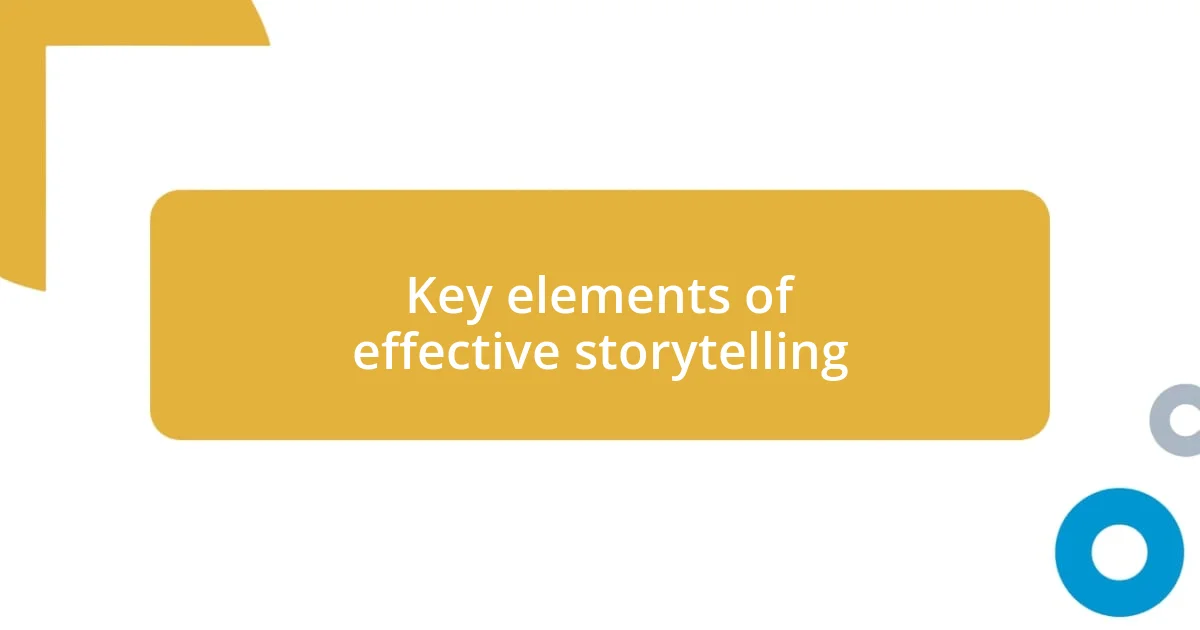
Key elements of effective storytelling
Effective storytelling hinges on a few core elements that truly resonate with an audience. One of the crucial components is character development. I recall a project where I transformed a data set about a local charity’s impact into a story centered around individuals who benefited from its programs. Instead of listing statistics, I described their struggles and triumphs, which made the data not just numbers but a heartfelt narrative that stuck with listeners long after the presentation ended.
Another vital aspect is the narrative arc, which provides structure. Think about it: every iconic story has a beginning, a middle, and an end. In one of my earlier presentations, I crafted a storyline that illustrated a problem, introduced a solution, and then showed the positive outcomes using data. This approach created a natural flow that kept my audience engaged and invested in the outcome. It’s fascinating how a well-told story can turn even the most mundane data points into something exciting and relatable.
Finally, relatability is essential. When I presented data regarding housing statistics in various neighborhoods, I shared personal anecdotes of families facing struggles. The audience connected to these real-life situations, which transformed the dry data into a conversation about community and empathy. This blend of personal insight with data opens up a dialogue that resonates within our shared experiences. Isn’t it incredible how stories can bridge gaps between numbers and human emotions?
| Key Element | Description |
|---|---|
| Character Development | Creating relatable figures to humanize the data. |
| Narrative Arc | Structuring the story with a clear beginning, middle, and end. |
| Relatability | Connecting the data to personal experiences or real-life situations. |
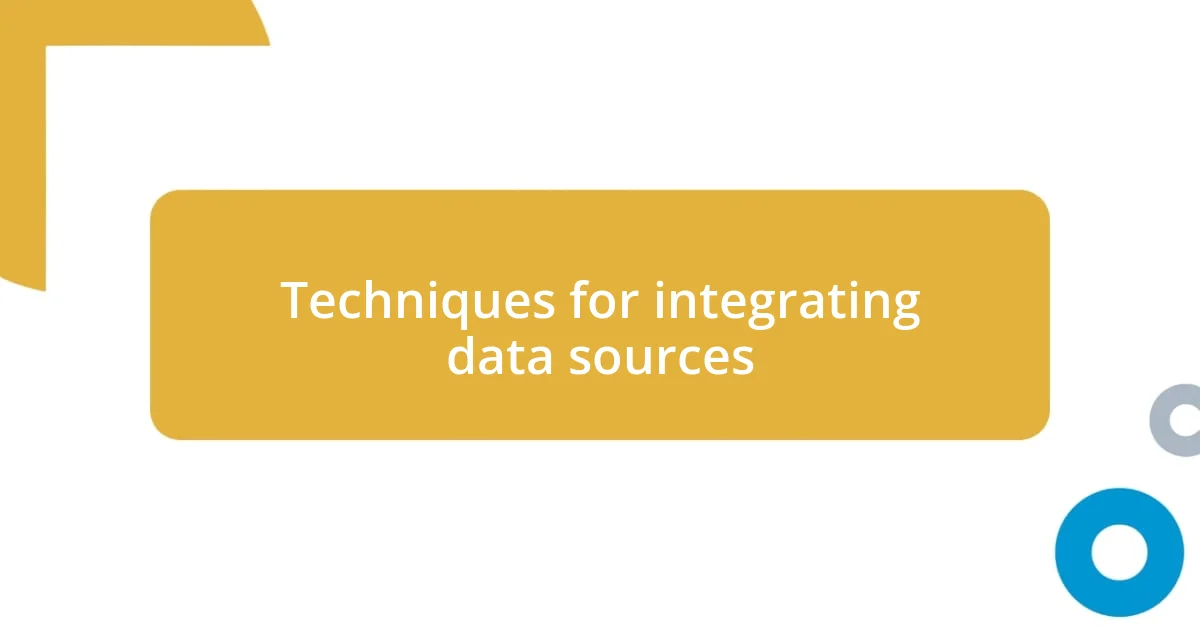
Techniques for integrating data sources
Integrating diverse data sources can feel daunting, but I’ve discovered some effective techniques that really enhance the storytelling process. One approach I often employ is creating a centralized data repository. By compiling information from various platforms, I can see the interconnectedness of different data points. For example, while analyzing social media engagement alongside website traffic, I noticed a correlation that painted a more comprehensive picture of audience behavior, revealing insights that individual data sets alone could never convey.
Here are some techniques that have worked well for me:
- Data Mapping: Visualizing how different data sources relate can help uncover dependencies and patterns.
- APIs for Real-Time Data: Using Application Programming Interfaces (APIs) streamlines the process of gathering and updating data, ensuring that my narratives are based on the latest information.
- Data Integration Tools: Employing platforms like Tableau or Power BI allows me to combine and visualize data seamlessly, which can lead to discoveries that might otherwise go unnoticed.
In another instance, while preparing a presentation on environmental changes, I integrated climate data with economic statistics. I realized that presenting these sources together told a powerful narrative about how consumer choices are influenced by environmental policies. It wasn’t just about numbers; it was about the concrete effects on communities and the economy that sparked my audience’s curiosity and concern. Mixing these data sources made the story not only more informative but deeply impactful, engaging the audience’s emotions and prompting them to think critically about the issues presented.
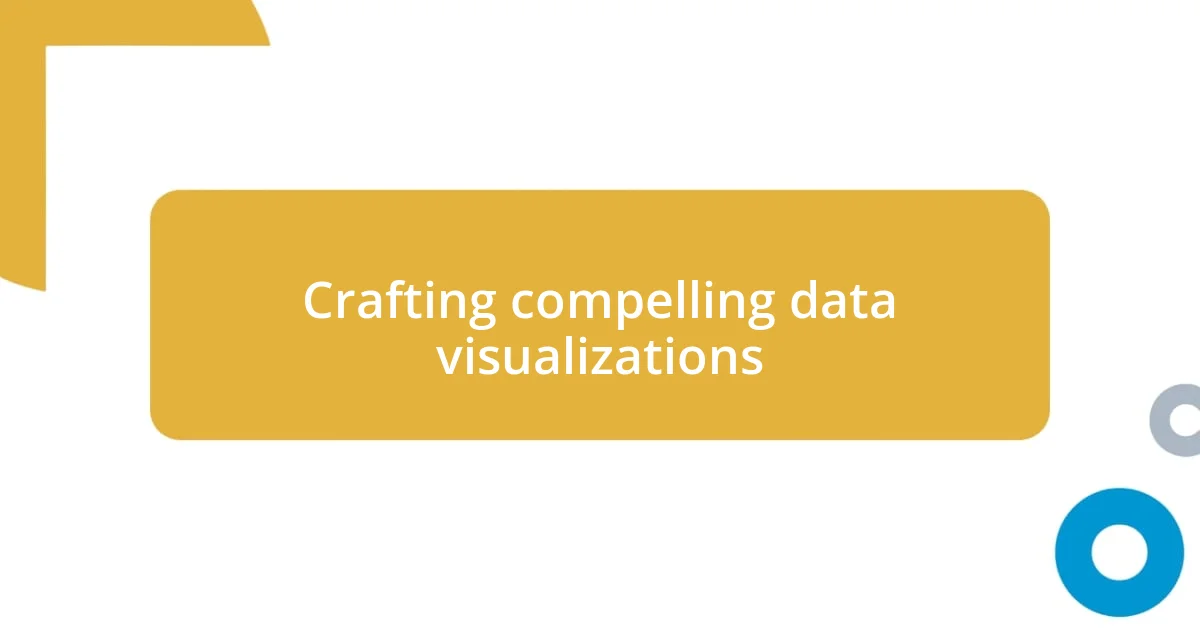
Crafting compelling data visualizations
When I think about crafting compelling data visualizations, I often recall a project where I was tasked with showcasing quarterly sales figures. Rather than drowning my audience in pie charts, I decided to use a series of bar graphs that highlighted trends over time. This approach allowed me to emphasize year-over-year growth—and the excitement in the room was palpable when I pointed out a 30% increase in just one year. Isn’t it amazing how the right visual can transform numbers into a story of success?
Another experience comes to mind when discussing color choices in visualizations. I once created a dashboard for a health initiative, and I chose a warm color palette to evoke feelings of hope and urgency. I’ve noticed that colors can influence emotions significantly. By using soft greens and vibrant oranges, I aimed to not only convey information but also spark enthusiasm around wellness. This thought made me wonder: are we truly harnessing the emotional power of colors in our data presentations?
Finally, I can’t emphasize enough the impact of interactivity in visualizations. During a recent conference, I designed a clickable infographic that allowed attendees to explore data in depth according to their interests. I watched as people dove into various sections, discussing their findings with each other. Interactivity not only fosters engagement but also invites the audience to partake in the storytelling process. I often ask myself, how can we rely solely on static images when we have the tools to create these immersive experiences that resonate on a personal level?
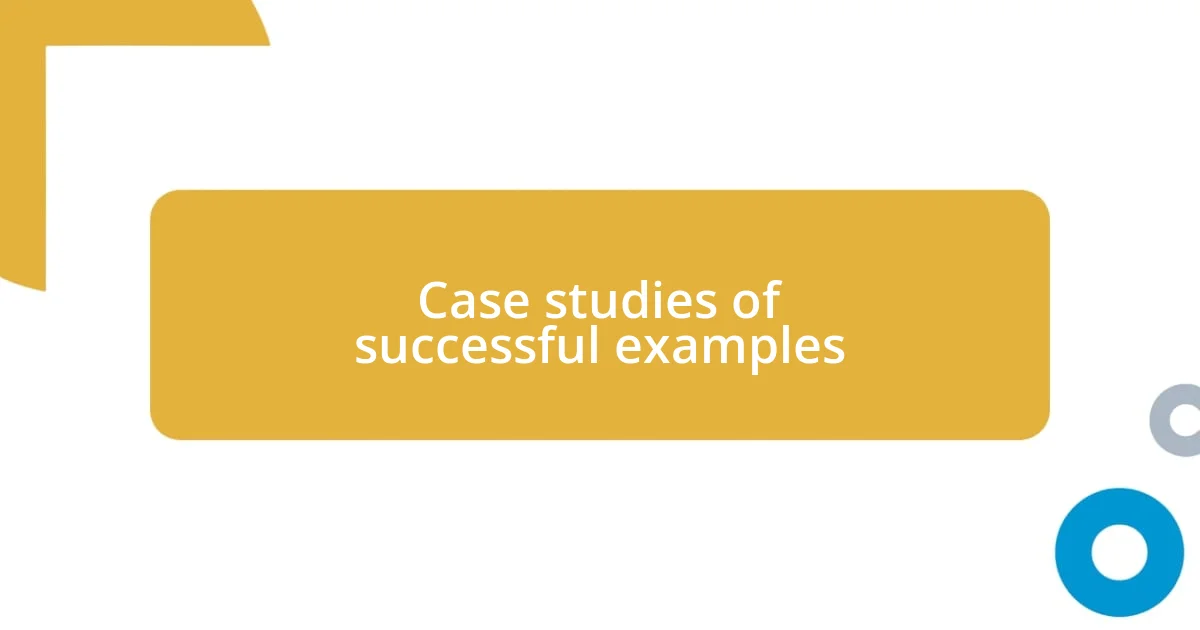
Case studies of successful examples
I remember a campaign by a nonprofit that aimed to boost awareness about literacy rates. Their strategy involved weaving personal stories of individuals impacted by literacy programs with hard data showing the positive outcomes. By combining heartfelt testimonials with statistics—like a 25% increase in literacy rates over three years—they created a narrative that resonated with donors and community members alike. It made me realize how effective blending personal stories with data can be in moving people to action.
Another example that stands out is a tech company’s campaign highlighting customer satisfaction data. They collected feedback over a year and combined it with customer demographics, showcasing how satisfaction varied across different segments. By presenting this data in a user-friendly, interactive dashboard, they encouraged users to explore the data themselves. This hands-on approach not only informed the audience but also fostered a sense of ownership and engagement. Don’t you think that allowing users to interact with data makes the story feel more personal and impactful?
Lastly, I came across a case study on city planning that successfully utilized public transportation data. The city shared heat maps showing the busiest routes alongside community feedback collected through social media. This combination highlighted areas needing improvement and sparked community discussions around potential changes. I wondered, how often do we overlook such collaborative storytelling? It’s fascinating to see how data-driven narratives can not only inform but also ignite conversations and drive collective action in community building.



